1.单位全部用dp,优先使用包裹内容和填充父窗体和权重来完成布局。
2.通过dimens文件来适配,需要三套,不考虑横屏
2.1 默认的dimens.xml 放按hdpi适配的参数;
2.2 hdpi的dimens.xml 放按hdpi适配的参数;
2.3 xhdpi的dimens.xml 放按xhdpi适配的参数;
3.适配的时候只用完美的完成一套xhdpi的dimens文件,然后通过代码生成hdpi的,因为就dp来说,他们有固定的比例关系,代码后面会贴出。
贴一个基本知识:
ldpi 1dp = 0.75px 320*240 160dp = 120px mdpi 1dp = 1px 480*320 160dp = 160px hdpi 1dp = 1.5px 800*480 160dp = 240px xhdpi 1dp = 2px 1280*720 160dp = 320px<360px 180dp = 360px xxhdpi 1dp = 3px 1920*1080 160dp = 480px < 540px 180dp = 540px先说测试结果:
1.没有ldpi和mdpi对应的dimens.xml的情况下:会加载默认的dimens.xml
2.而hdpi,xhdpi,xxhdpi这三种会加载最近的dimens.xml文件
下面是测试过程:
我的测试dimens:
--默认的dimens.xml
<resources> <dimen name="activity_horizontal_margin">5dp</dimen> <dimen name="activity_vertical_margin">5dp</dimen> </resources>
--hdpi的dimens.xml:
<resources> <dimen name="activity_horizontal_margin">50dp</dimen> <dimen name="activity_vertical_margin">50dp</dimen> </resources>
--xhdpi的dimens.xml:
<resources> <dimen name="activity_horizontal_margin">500dp</dimen> <dimen name="activity_vertical_margin">100dp</dimen> </resources>
测试布局:
<RelativeLayout xmlns:android="http://schemas.android.com/apk/res/android" android:layout_width="match_parent" android:layout_height="match_parent"> <TextView android:layout_centerInParent="true" android:background="#000000" android:layout_width="@dimen/activity_horizontal_margin" android:layout_height="@dimen/activity_vertical_margin"/> </RelativeLayout>
在不同分辨率手机下的效果:(为了好看一些,图片大小被我拉伸过),下面依次为:ldpi,mdpi,hdpi,hdpi(删除hdpi对应的dimens之后),xhdpi,xxhdpi
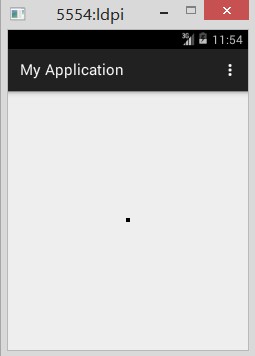
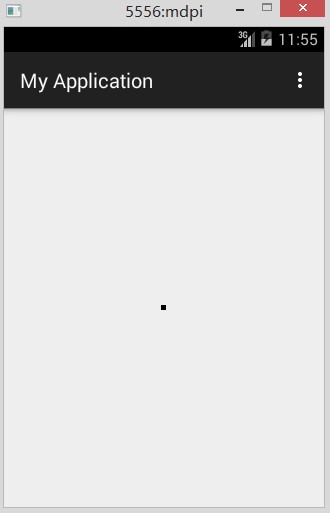
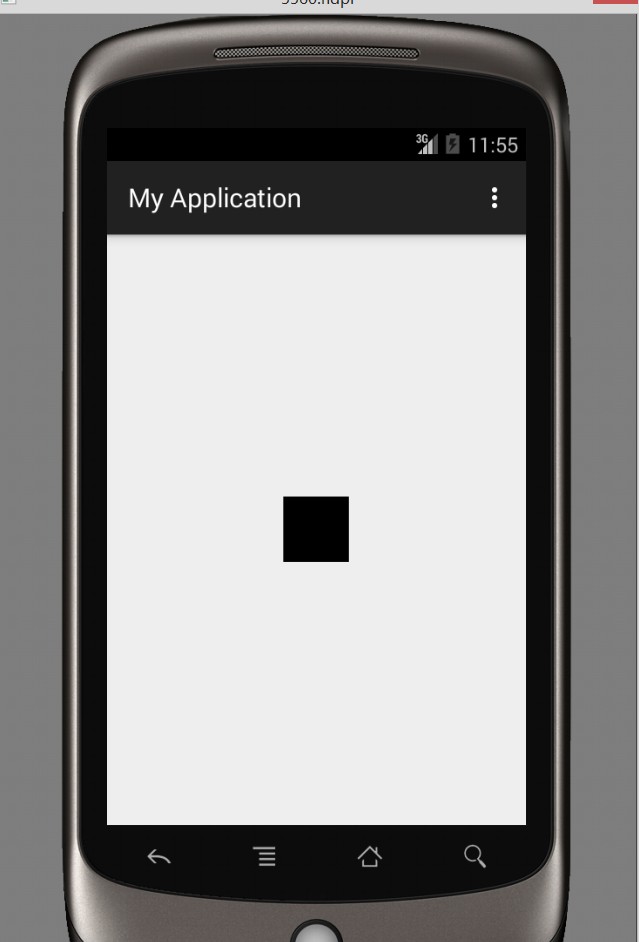
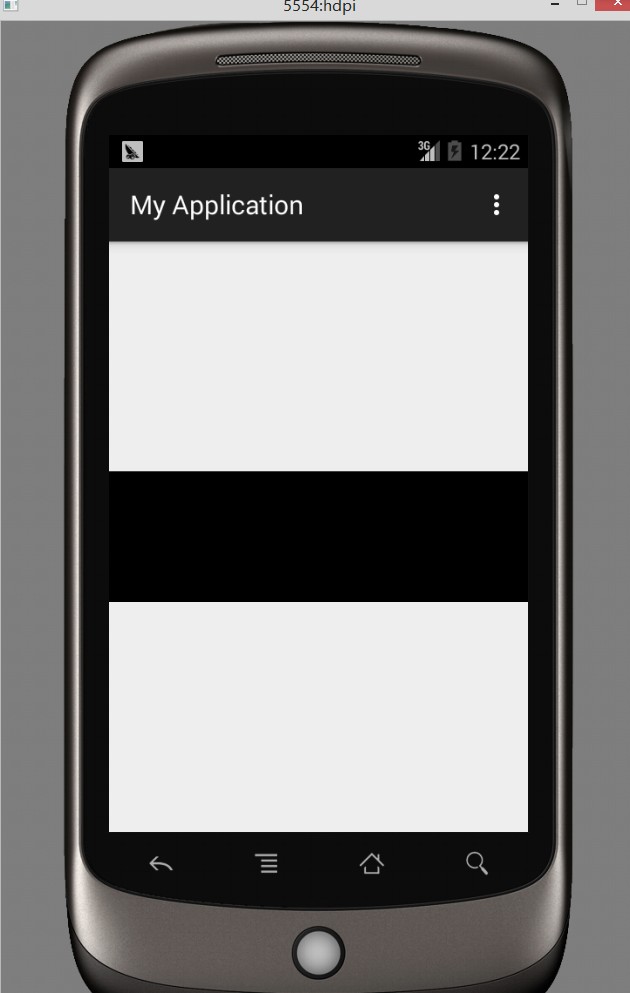

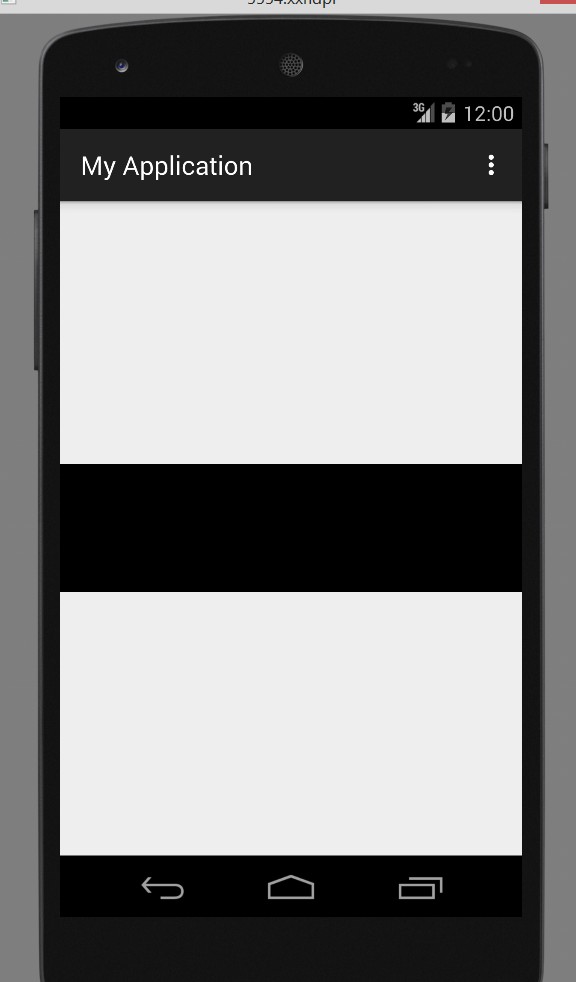
(ldpi) (mdpi) (hdpi) hdpi(删除hdpi对应的dimens之后) (xhdpi) (xxhdpi)
分析结果:
1.ldpi和mdpi在没有对应的dimens的情况下,会去加载默认的dimens。而ldpi和mdpi和hdpi可以共用一套。 所以默认的dimens放hdpi的标准。
2.hdpi,xhdpi,xxhdpi会加载最近的dimens文件,所以删除hdpi对应的之后,加载了xhdpi的dimens。 所以要放一套hdpi的dimens。
3.xhdpi和xxhdpi用的一套标准,他们又会加载最近的。 所以要放一套xhdpi的。
也是分两种考虑
1.大图且内容复杂的 2.小图和大图但是内容简单的
有上面贴出的基本知识可算出,ldpi,mdpi和hdpi的长宽缩放比例是一样的;xhdpi和xxhpdi是一样的。
所以关于图片部分的解决方案就是:
1.小图和大图但是内容简单的:
我们就把图片的控件写死,让图片的xy适配控件,发生变形。 只用切一套图,这样图片会有拉伸的情况出现,但是大图但是比如纯色的,拉伸也看不出来,小图拉伸也不明显。所以就这样做。
所以小图或大图且内容简单的解决方案就是,写死控件,让图片的xy适配控件。
2.大图且内容复杂的:
这种图片拉伸变形明显,所以我们要针对不同分辨率做处理:
其中xhdpi(1280*720)和xxhdpi(1920*1080)他们的长宽缩放是成比例的,都是1.5。所以他们可以共用一套图片。放在xhdpi对应的drawable目录下或者xxhdpi对应的drawable目录下即可。
hdpi,mdpi,ldpi,是不成比例的,所以要想获得最佳的适配效果,我们需要分别适配这三套,但是我觉得按现在市场是的手机情况,我们在适配一下hdpi就可以了。class="Apple-tab-span" style="white-space: pre;">
所以大图且复杂的解决方案就是,适配两套,xhdpi的和hdpi的。
(ps:这里讨论的是app原生布局的适配,所以不适用于填充的图片是动态变化的且长宽不成比例的情况,比如,用户上传图片,这里为健壮还要做很多处理,不在讨论的范围内)
除了用dimens适配还有用layout布局文件适配的方案,通过代码动态设置的方案(我之前启动界面用过一个gif图片 ,就用的动态设置)
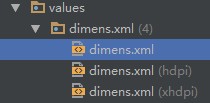

对于px,dp,sp,dimens,权重这些基本概念我就不在这里一一介绍了。
转换dimens的代码:old放的是适配xhdpi的,转换比例是xhdpi屏幕的一半是180dp除以hdpi屏幕的一半是160dp得到的1.125. 这样的话只要完美适配一套xhdpi的,然后生成hdpi的就好了。
package convert; import java.io.BufferedReader; import java.io.BufferedWriter; import java.io.File; import java.io.FileReader; import java.io.FileWriter; import java.io.IOException; public class DimensTools { static String oldFilePath = "src/convert/dimens.xml"; static String filePathHdpi="src/convert/dimensHdpi.xml"; static float changes = 1.125f; public static void main(String[] args) { String st = convertStreamToString(oldFilePath, changes); DeleteFolder(filePathHdpi); writeFile(filePathHdpi, st); } public static String convertStreamToString(String filepath, float f) { StringBuilder sb = new StringBuilder(); try { BufferedReader bf = new BufferedReader(new FileReader(filepath)); String line = null; System.out.println("q1"); String endmark = "dp</dimen>"; String startmark = ">"; while ((line = bf.readLine()) != null) { if (line.contains(endmark)) { int end = line.lastIndexOf(endmark); int start = line.indexOf(startmark); String stdp = line.substring(start + 1, end); //int dp = Integer.parseInt(stpx); float dp=Float.parseFloat(stdp); //float newdp = ((float) dp / f); System.out.println("dp:"+dp); float newdp=dp/f; System.out.println("newdp:"+newdp); String dpStr=String.valueOf(dp); String newline; if(dpStr.contains(".0")){ int x=dpStr.indexOf("."); System.out.println("x:"+x); dpStr= dpStr.substring(0,x); newline= line.replace(dpStr + "dp", newdp + "dp"); }else{ newline = line.replace(dp + "dp", newdp + "dp"); } System.out.println("newline:"+newline); sb.append(newline + "\r\n"); } else { sb.append(line + "\r\n"); } } // System.out.println(sb.toString()); } catch (IOException e) { e.printStackTrace(); } return sb.toString(); } public static boolean DeleteFolder(String sPath) { File file = new File(sPath); if (!file.exists()) { return true; } else { if (file.isFile()) { return deleteFile(sPath); } else { // return deleteDirectory(sPath); } } return false; } public static void writeFile(String filepath, String st) { try { FileWriter fw = new FileWriter(filepath); BufferedWriter bw = new BufferedWriter(fw); bw.write(st); bw.flush(); bw.close(); } catch (IOException e) { e.printStackTrace(); } } public static boolean deleteFile(String sPath) { boolean flag = false; File file = new File(sPath); if (file.isFile() && file.exists()) { file.delete(); flag = true; } return flag; } }
最后,我也是自己摸索,有什么问题,还望大家指点。